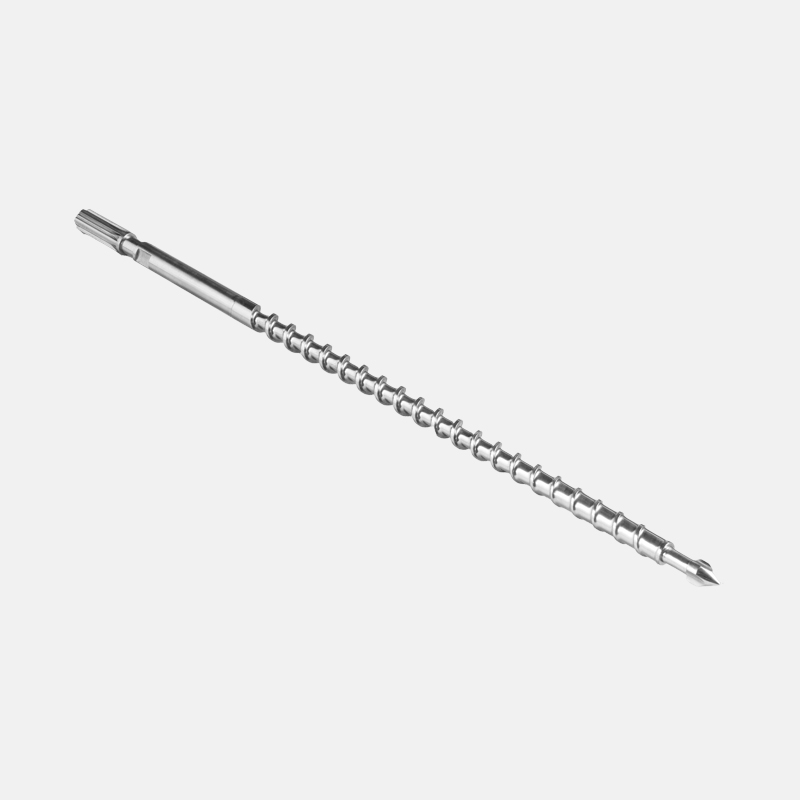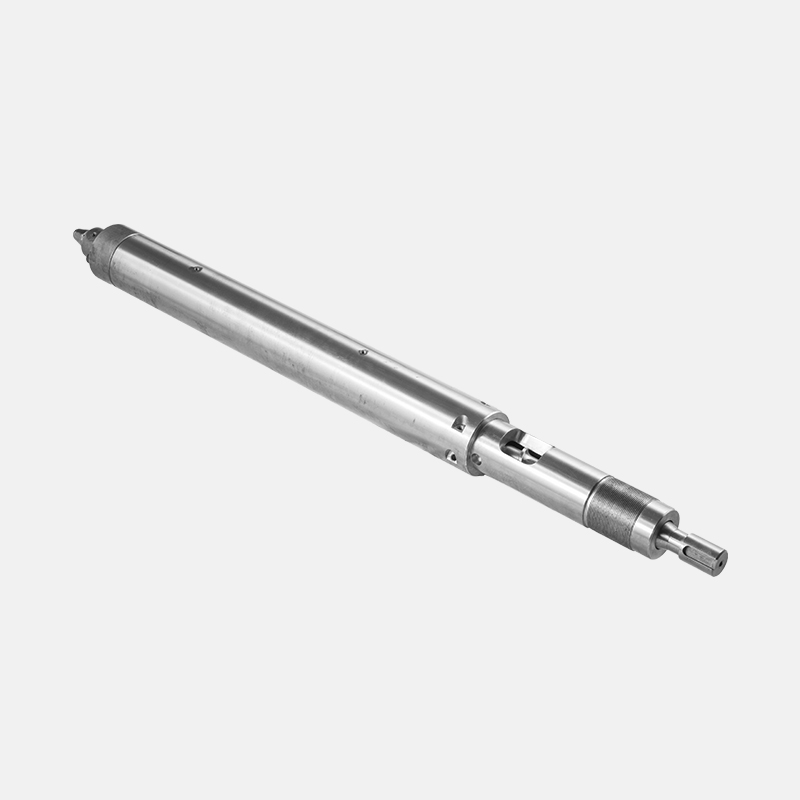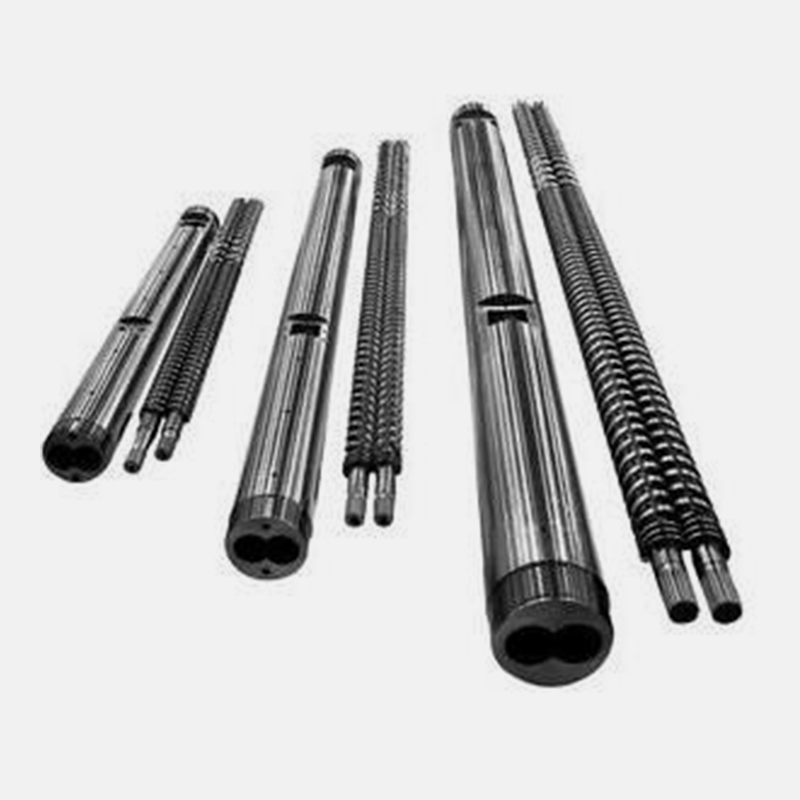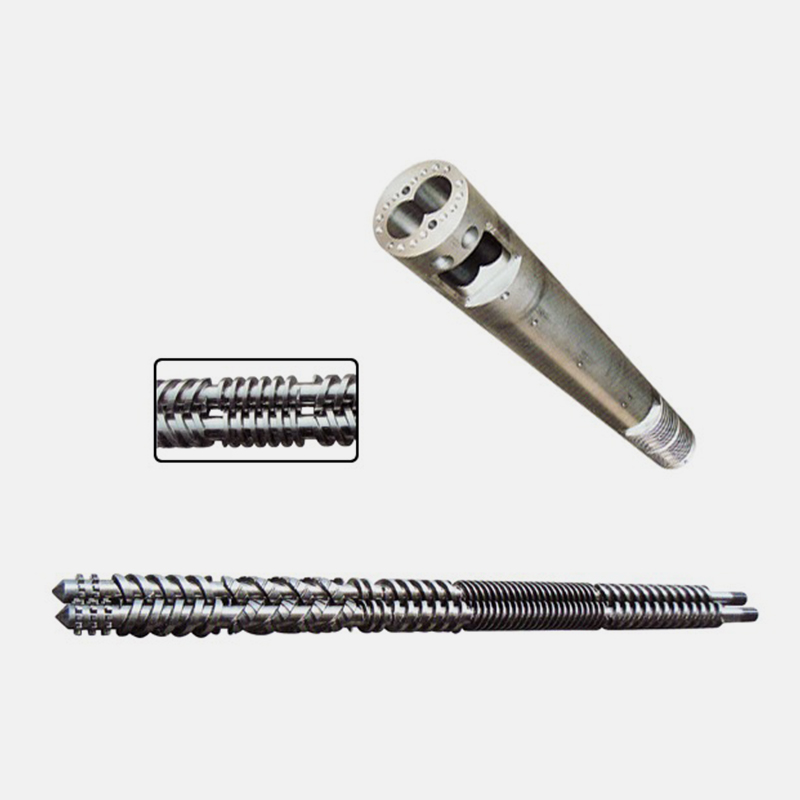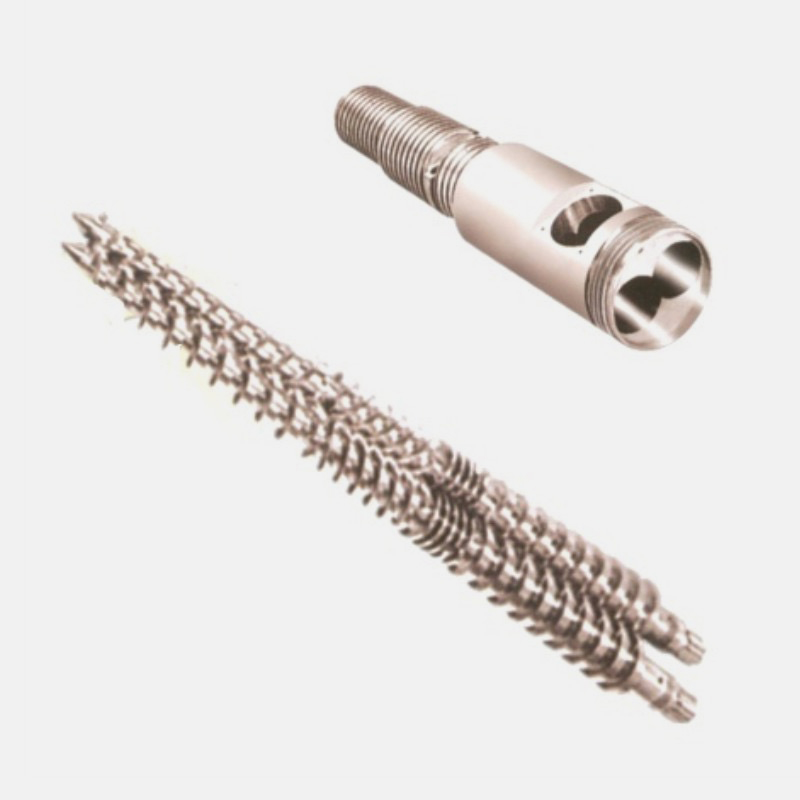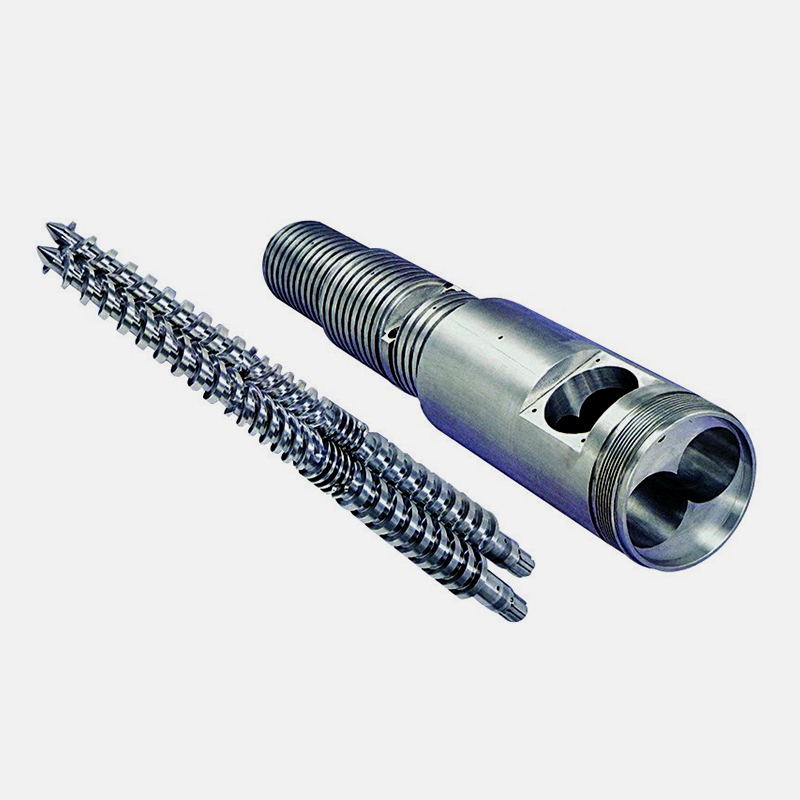Extrusion is a manufacturing process used Extruder screw barrel to shape molten plastic. Internal friction and an external heat supply by way of heat resistors are exploited to transform an infed base material into a finished or semi-finished product, shaping material by forcing it through a die extrusion crosshead.Single screw extruder has two fundamental mechanical components: the extruder barrel and screw. Prior to use in manufacturing applications, both extruder barrels and screws are surface hardened, usually with a nitriding depth of around 0.5 mm, to obtain screw hardness of around 800 HV and barrel hardness of approximately 1000 HV.
Besides construction features and material, extruder barrels may also be classified according to their and external characteristics or conformation. In terms of external surface conformation, they may be smooth or machined.There are both advantages and disadvantages to using externally smooth barrels, i.e. barrels which have not been worked on a machine tool or coated. We know that, on this type of barrel, heat resistors are positioned in such a way as to allow cooling via special fans, so it is clear that this type of barrel has good heating ability but only average cooling capacity. In fact, copper and aluminum-finned thermal coupling systems have to be used to improve heat dispersion rates during cooling, especially when processing materials that are sensitive to sudden changes in temperature, where just a few degrees in excess can jeopardize process performance.
Smooth barrels have a lower capacity or melt output than grooved barrels. Grooved barrel output is in fact around times higher than smooth barrel output.Extruder output and process regularity are very much influenced by grooves and by the right choice of motor and reduction gear. In fact, if grooves are not properly processed, attempting to achieve a particular flow rate will generate excessive driving torque, causing the molten plastic to pulsate as its exits the crosshead.
Clearly, therefore, material-barrel friction increases with this type of barrel as do differences in material-screw and material-barrel friction.In their simplest conformation, extruder screws consist of three functional zones: a cylindrical feed zone, a melt or conical compression zone with a set compression ratio and a cylindrical metering zone end of screw. They may also then have barrier flights or mixing zones.The metering zone, which usually spans the last diameters of the screw, serves only to pump the molten polymer forward in the same direction, guaranteeing the right pumping pressure to convey it through the die, thought the conveyor and into the crosshead.

 English
English 简体中文
简体中文 España
España عربى
عربى
